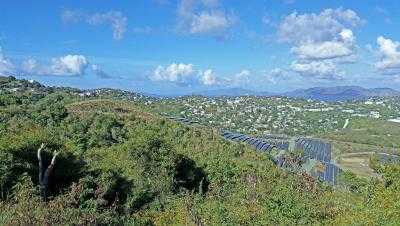Cities turning to solar power for their most expensive operation
 In most municipalities, the biggest of draw on the electrical grid comes from wastewater treatment facilities, according to public works managers. In an effort to quit wasting so much power on waste, cities all over the country have turned to the sun.
In most municipalities, the biggest of draw on the electrical grid comes from wastewater treatment facilities, according to public works managers. In an effort to quit wasting so much power on waste, cities all over the country have turned to the sun.
Boulder, Colo.; Morristown, New Jersey; Worcestor, Mass.; Corona, Calif., and now Hayward, Calif., have all installed solar photovoltaic systems to offset the tremendous amount of electricity needed in order to manage the waste produced in their communities.
“Our number-one electricity user is the wastewater treatment plant,” said Bob Bauman, Hayward’s director of public works. “The second largest is the pumping station, which pumps drinking water up the hill. Nobody realizes how much energy it takes to move water around.”
The City of Hayward, which is home to about 220,000 residents, cut the ribbon on a new 1-megawatt solar installation at its wastewater treatment plant earlier this week. The community is in the San Francisco Bay area, and the installation is the second largest in the county, Bauman said.
Everyone knows that treating wastewater is a dirty business, or at least they assume it is, but when you weigh in the amount of fossil-fuels burned to generate the massive amounts of power needed to clean dirty water, the business suddenly seems even dirtier than first assumed.
That’s why it’s one of the first big solar projects that communities around the country are considering.
In addition to saving fossil fuels and cleaning up the dirty business of cleaning water, going solar at a wastewater treatment facility can offer up big savings for communities.
Bauman said he expects Hayward’s system to save the city about $620 a day on its electricity bill.
And the savings was not too difficult to achieve, he said.
The city financed the $5.7-million project with a $2.6-million California Solar Initiative Grant and a $2.5-million loan from the California Energy Commission, Bauman said.
“In the end, we decided it would be in the city’s best interest to own the project ourselves,” Bauman said.
Many communities have looked into power-purchase and system-lease deals to avoid the upfront costs of installing solar projects. But with the financing available to Hayward, it made sense for the city to contract with REC Solar, Bauman said.
In addition to the new solar installation, the plant gets about 30 percent of its energy for wastewater treatment from cogeneration and has a request for proposals out to green-up the rest of the water treatment operation, Bauman said.
Image courtesy of the California Water Environment Association.



